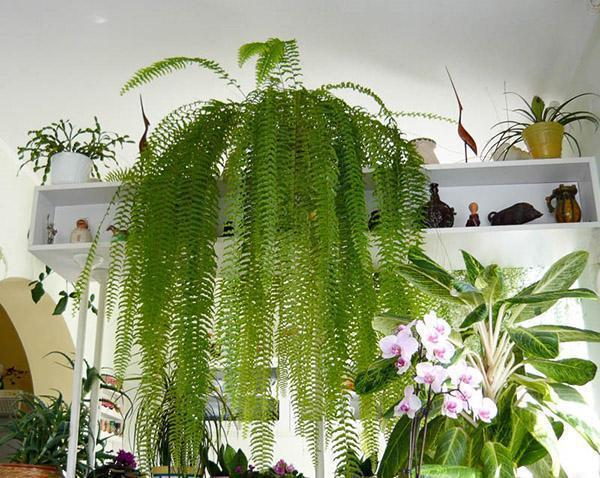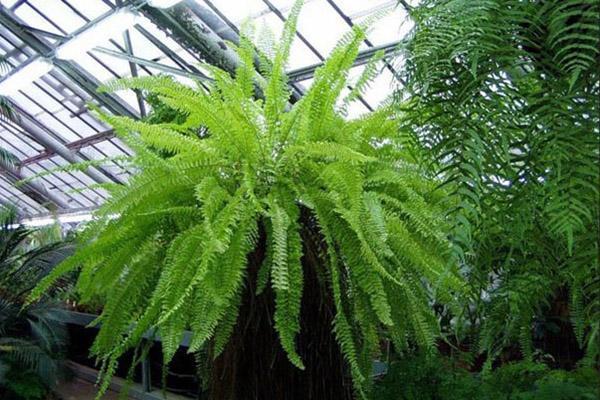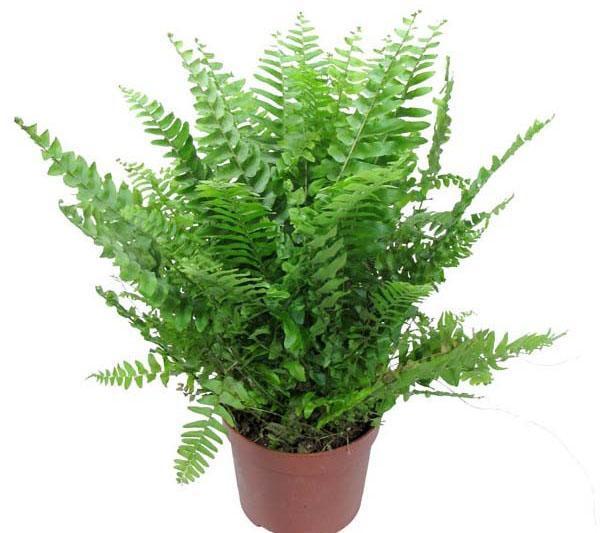What type of nephrolepis will we grow at home?
 If you want to plant an unusual plant, for example, a fern, then nephrolepis for growing at home is the best fit for this case. It not only looks spectacular and beautiful, but also has beneficial properties.
If you want to plant an unusual plant, for example, a fern, then nephrolepis for growing at home is the best fit for this case. It not only looks spectacular and beautiful, but also has beneficial properties.
Description of the plant
The natural habitat of nephrolepis is the tropical forests of Southeast Asia, Africa and America. And for many years now, it has been referred to as indoor plants.
This genus of fern has such a useful property as purification of the surrounding air. It absorbs toxic substances (toluene and formaldehyde) and pathogenic bacteria. Therefore, very often nephrolepis can be found in medical institutions.
Nephrolepis species include about 40 different ferns, but only a few are suitable for growing at home.

 Nephrolepis Boston. The species was bred in the United States. The leaves of this fern can be double-, triple- and four-pinnate.
Nephrolepis Boston. The species was bred in the United States. The leaves of this fern can be double-, triple- and four-pinnate.
 Nephrolepis cordifolia. It is another popular species among indoor plant lovers. Has a characteristic feature on superficial shoots in the form of swollen formations, resembling tubers in appearance. The leaves grow vertically, the segments of the leaf blade are more densely located.
Nephrolepis cordifolia. It is another popular species among indoor plant lovers. Has a characteristic feature on superficial shoots in the form of swollen formations, resembling tubers in appearance. The leaves grow vertically, the segments of the leaf blade are more densely located.
 Nephrolepis is xiphoid. This type of nephrolepis for growing at home is native to Central America. Its distinctive feature is the presence of very long leaves that can reach two meters. Because of this, xiphoid nephrolepis is most often suitable for growing in equipped greenhouses.
Nephrolepis is xiphoid. This type of nephrolepis for growing at home is native to Central America. Its distinctive feature is the presence of very long leaves that can reach two meters. Because of this, xiphoid nephrolepis is most often suitable for growing in equipped greenhouses.
Care
 Nephrolepis are quite unpretentious plants, however, it is important to observe certain conditions.
Nephrolepis are quite unpretentious plants, however, it is important to observe certain conditions.
Illumination. Ferns prefer diffused light, so the ideal habitat for him are windows facing west or east. Avoid direct sunlight, otherwise burns may appear on the leaves.
Temperature. This is a rather thermophilic genus of tropical ferns, so the optimal temperature for its cultivation ranges from + 20-23 ° C.
In winter, the temperature should not drop below + 13 ° C, and the plant should not be left in a draft.
Watering. It is necessary to water the fern abundantly enough, especially in the hot season. The water should be settled, at room temperature. You can also pour water into the pan of your flower pot.
Air humidity. Like many ferns, nephrolepis prefers a fairly high humidity - about 50-60%.
It is impossible for the plant to be near heating appliances.
Transplant and reproduction
 Reproduction of nephrolepis for growing at home can be carried out in two ways:
Reproduction of nephrolepis for growing at home can be carried out in two ways:
- With the help of shoots. When transplanting a large adult plant, it can be divided. To do this, the top of the young shoot is sprinkled with earth in a nearby pot, as soon as new leaves and roots are formed, the adult plant and the shoot can be planted.
- By dividing the rhizome.To do this, you need to find individual shoots that have their own points of growth, separate them from the adult plant and plant them in pots. It is imperative to create high air humidity and maintain a temperature of about + 15-18 ° C.
Like other fern genera, nephrolepis is transplanted in the spring, every two or three years. It is best to choose pots made of plastic, fairly wide and shallow containers. Expanded clay is required for drainage. The soil for ferns should be light: coniferous soil or peat is suitable. You can add very little bone meal to it (about 5-7 g per 1 kg of substrate).
Pest and disease control
The main pests of the fern are scale insects, whitefly, aphids and spider mite. To combat them, it is necessary to treat the plant with such insecticidal agents as Actellik or Aktara.
Among the diseases in the fern of the genus Nephrolepis, the most common is:
- dry leaves - more frequent watering of the plant or a higher level of humidity in the room is required;
- leaves fall off, curl up or change color - you need to raise the air temperature, remove the plant from drafts and water only with settled, warm water;
- dry, brown spots (burns) appear on the leaves - the plant should be removed to a more shaded place.
As you can see, the Nephrolepis fern is a fairly undemanding plant, the care of which does not cause much trouble. But if certain conditions are met, this plant will delight with its unusual appearance for more than one year.